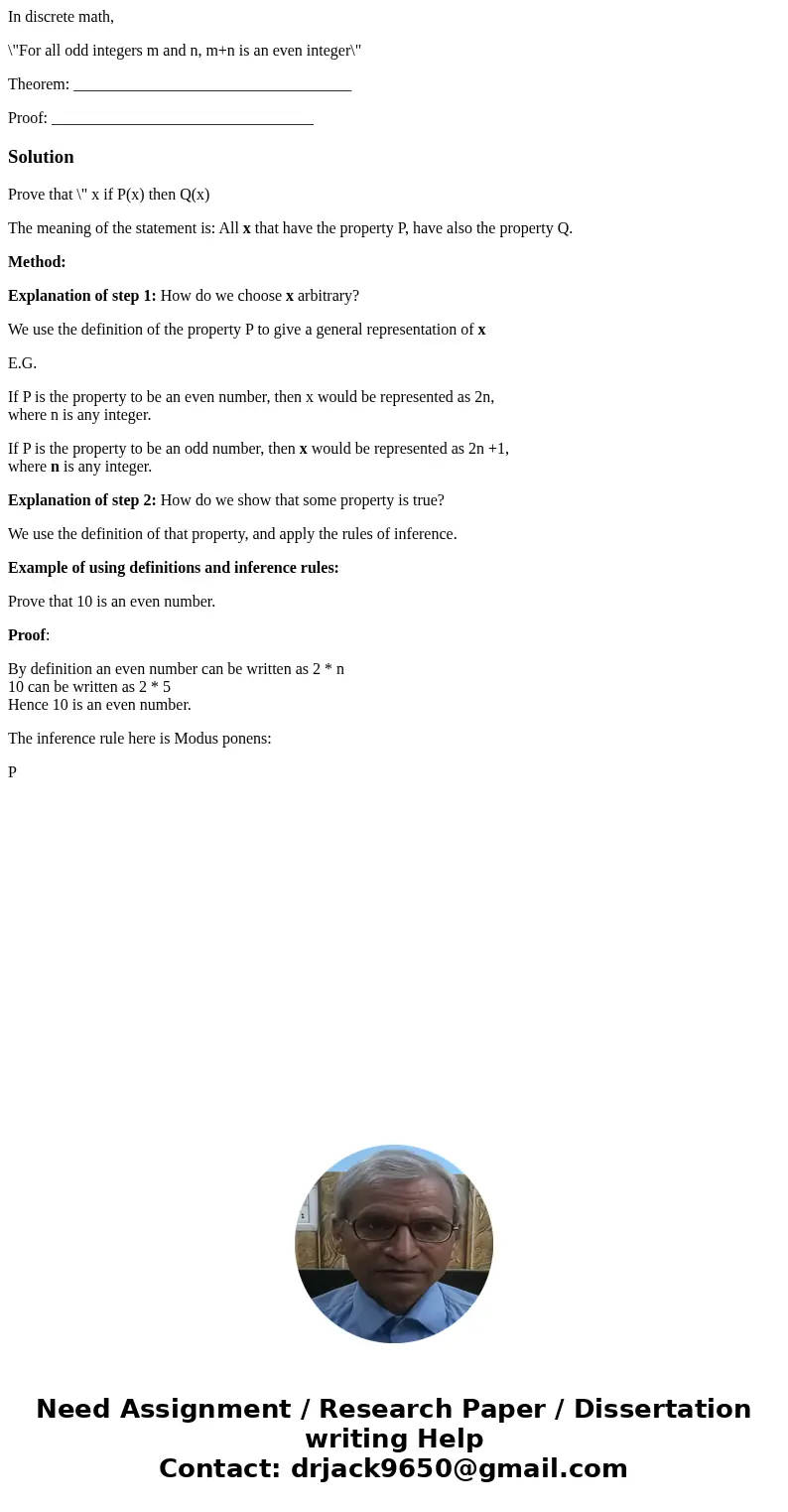In discrete math For all odd integers m and n mn is an even
In discrete math,
\"For all odd integers m and n, m+n is an even integer\"
Theorem: ___________________________________
Proof: _________________________________
Solution
Prove that \" x if P(x) then Q(x)
The meaning of the statement is: All x that have the property P, have also the property Q.
Method:
Explanation of step 1: How do we choose x arbitrary?
We use the definition of the property P to give a general representation of x
E.G.
If P is the property to be an even number, then x would be represented as 2n,
where n is any integer.
If P is the property to be an odd number, then x would be represented as 2n +1,
where n is any integer.
Explanation of step 2: How do we show that some property is true?
We use the definition of that property, and apply the rules of inference.
Example of using definitions and inference rules:
Prove that 10 is an even number.
Proof:
By definition an even number can be written as 2 * n
10 can be written as 2 * 5
Hence 10 is an even number.
The inference rule here is Modus ponens:
P

 Homework Sourse
Homework Sourse